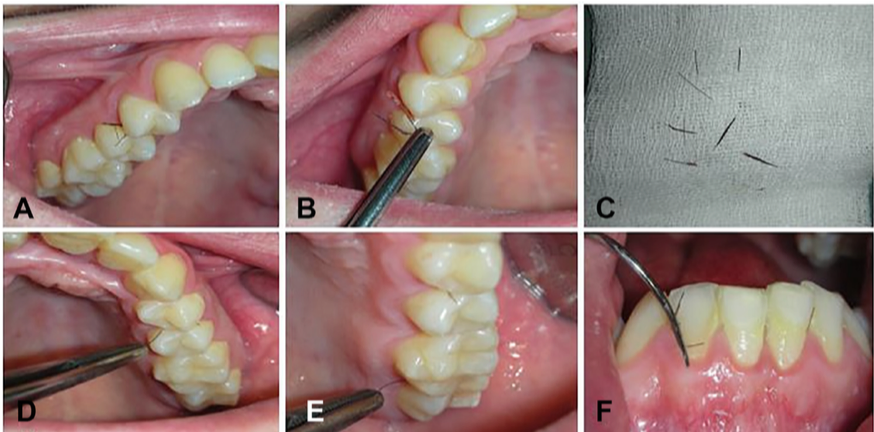| You will always remember the day you found hair growing in someone’s mouth. The oral cavity is derived from the stomodeum, and ectodermal derivatives like sebaceous glands are not unheard of. However, the presence of sebaceous glands and hair growth together is extremely rare. So rare that only 5 cases have been reported so far. The first case was in 1960 during an autopsy where a single hair was found on the parotid gland of a 57- year old man. In the five cases reported, all the patients were healthy with no drug use reported. The hairs were seen in gingival sulcus, palatal surfaces, dorsum of the tongue, and the oropharynx. The hairs showed rapid growth even after removing them. Sometimes, the hairs fell spontaneously. Case Presentation In 2019, the first ever hair growth case in the oral cavity was reported in a woman. The patient first presented (then 19 years old) to a clinic in 2009 due to hair growth on the retroincisal palatal papilla. Hematologic exams showed high testosterone and luteinizing hormone levels. Further exams showed polycystic ovary syndrome. The hair and the soft tissues associated were surgically removed, and the patient was treated with oral contraceptives by an endocrinologist. She showed no relapse after the first 4 months of therapy. |

6 years following this first visit, the patient returned as the hair growth returned. Clinical examination showed hair growing on the chin and neck regions, and in the gingival sulcus of the upper/lower incisors and premolars. Once again the hair and soft tissues were surgically removed. Histopathology showed hypertrophy of the squamous epithelium. Hair was also observed in the gingival stroma.


As in this case and the others reported, ectopic squamous cells are usually present in the deeper parts of the lamina propria. The tissues around the hair follicles can show some degree of keratosis. These ectopic tissues can be triggered to grow hair by some underlying hormonal disorder, such as polycystic ovary syndrome. Initially the hair growth was relieved with treatment of the underlying syndrome, however the issues returned once the patient abandoned the treatment. In one of the other 5 cases reported so far, hair growth in the oral cavity decreased as the patient was treated for alopecia.
As of yet, there is no clear understanding of why sebaceous glands are common in the oral cavity and hair growth is extremely rare. There also no clear understanding of what can directly trigger such an event. In each case, the patient’s underlying hematologic profile should be examined to determine to most appropriate treatment.


